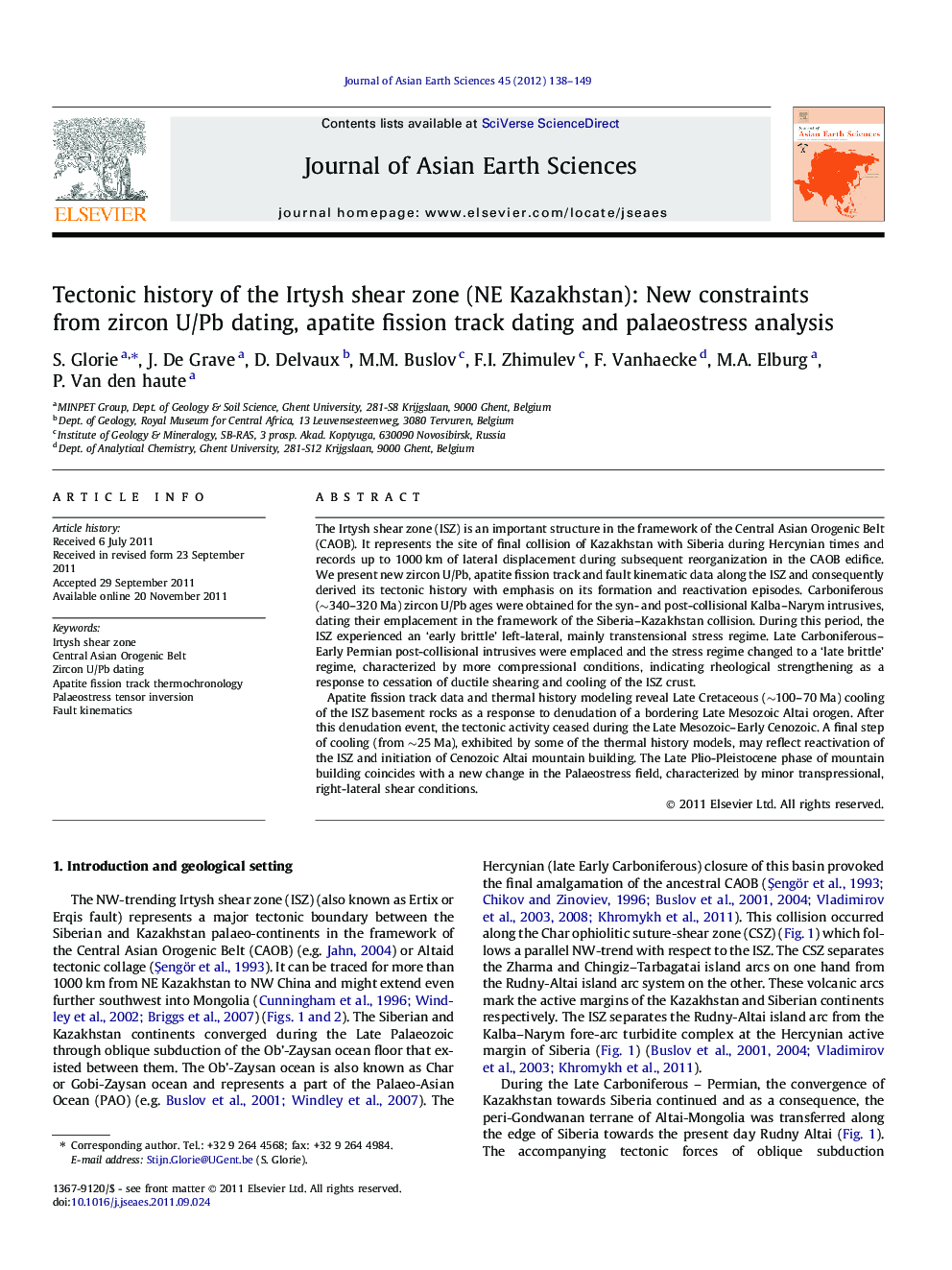| کد مقاله | کد نشریه | سال انتشار | مقاله انگلیسی | نسخه تمام متن |
|---|---|---|---|---|
| 4731561 | 1640419 | 2012 | 12 صفحه PDF | دانلود رایگان |

The Irtysh shear zone (ISZ) is an important structure in the framework of the Central Asian Orogenic Belt (CAOB). It represents the site of final collision of Kazakhstan with Siberia during Hercynian times and records up to 1000 km of lateral displacement during subsequent reorganization in the CAOB edifice. We present new zircon U/Pb, apatite fission track and fault kinematic data along the ISZ and consequently derived its tectonic history with emphasis on its formation and reactivation episodes. Carboniferous (∼340–320 Ma) zircon U/Pb ages were obtained for the syn- and post-collisional Kalba–Narym intrusives, dating their emplacement in the framework of the Siberia–Kazakhstan collision. During this period, the ISZ experienced an ‘early brittle’ left-lateral, mainly transtensional stress regime. Late Carboniferous–Early Permian post-collisional intrusives were emplaced and the stress regime changed to a ‘late brittle’ regime, characterized by more compressional conditions, indicating rheological strengthening as a response to cessation of ductile shearing and cooling of the ISZ crust.Apatite fission track data and thermal history modeling reveal Late Cretaceous (∼100–70 Ma) cooling of the ISZ basement rocks as a response to denudation of a bordering Late Mesozoic Altai orogen. After this denudation event, the tectonic activity ceased during the Late Mesozoic–Early Cenozoic. A final step of cooling (from ∼25 Ma), exhibited by some of the thermal history models, may reflect reactivation of the ISZ and initiation of Cenozoic Altai mountain building. The Late Plio-Pleistocene phase of mountain building coincides with a new change in the Palaeostress field, characterized by minor transpressional, right-lateral shear conditions.
► Carboniferous (∼338 Ma and ∼320 Ma) zircon U/Pb ages date Siberia–Kazakhstan collision.
► Meso-Proterozoic inherited zircons indicate limited recycling of Kazakhstan basement.
► Irtysh brittle palaeostress regime: (1) left-lateral transtensional; (2) compressional.
► Late Cretaceous (∼100–70 Ma) AFT ages indicate denudation of a Mesozoic Altai orogen.
► Transpressional, dextral movements along Irtysh start in the Late Oligocene (∼25 Ma).
Journal: Journal of Asian Earth Sciences - Volume 45, 2 February 2012, Pages 138–149